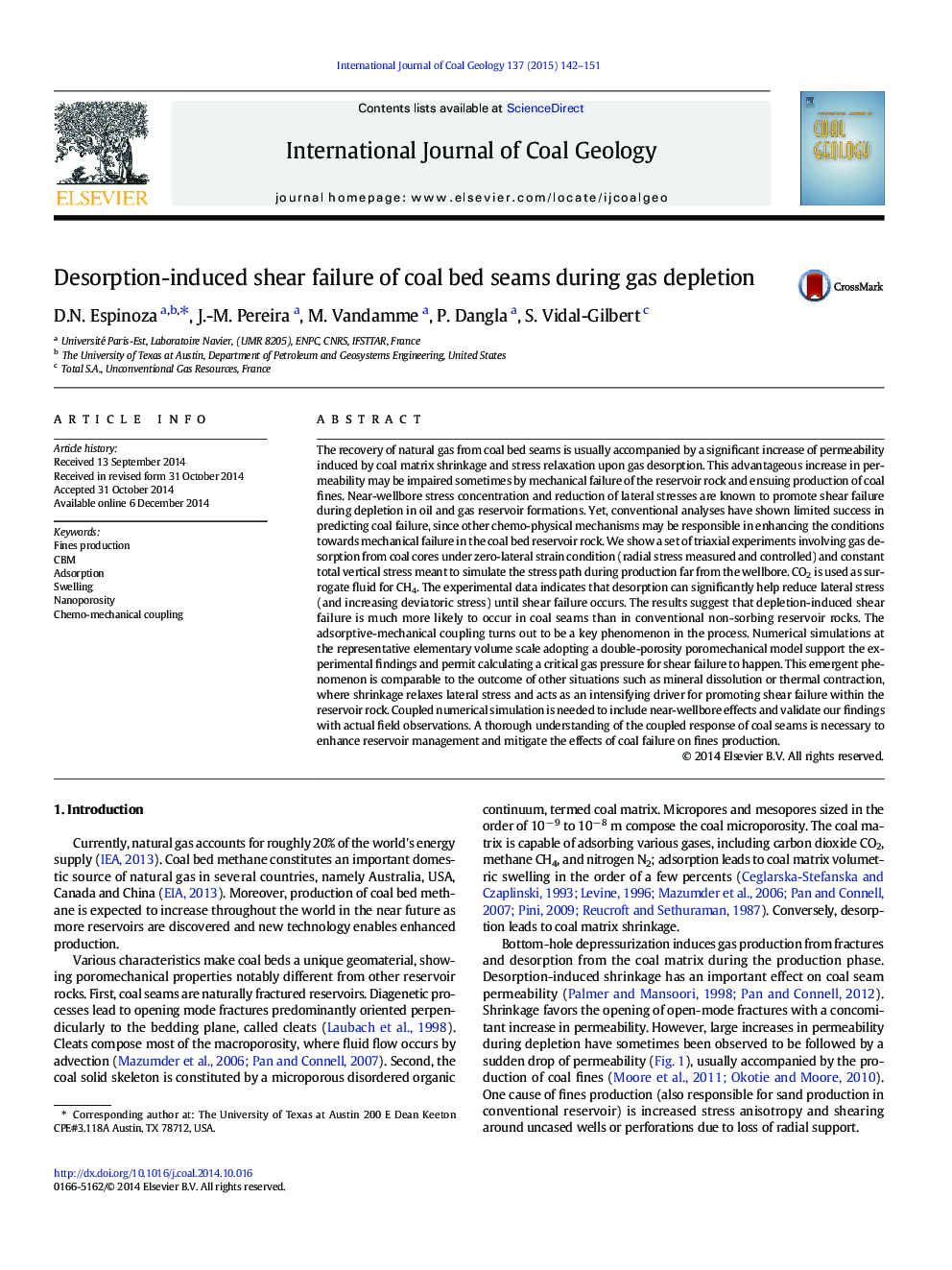| کد مقاله | کد نشریه | سال انتشار | مقاله انگلیسی | نسخه تمام متن |
|---|---|---|---|---|
| 1753099 | 1522561 | 2015 | 10 صفحه PDF | دانلود رایگان |
• We show experiments of gas desorption from coal cores under triaxial conditions.
• Desorption experiments are performed with CO2 under zero-lateral strain condition.
• Desorption significantly helps reduce lateral stress and increases deviatoric stress.
• Coal seams are more prone to depletion-induced shear than conventional reservoirs.
• A poromechanical model offers further insight and supports the experimental findings.
The recovery of natural gas from coal bed seams is usually accompanied by a significant increase of permeability induced by coal matrix shrinkage and stress relaxation upon gas desorption. This advantageous increase in permeability may be impaired sometimes by mechanical failure of the reservoir rock and ensuing production of coal fines. Near-wellbore stress concentration and reduction of lateral stresses are known to promote shear failure during depletion in oil and gas reservoir formations. Yet, conventional analyses have shown limited success in predicting coal failure, since other chemo-physical mechanisms may be responsible in enhancing the conditions towards mechanical failure in the coal bed reservoir rock. We show a set of triaxial experiments involving gas desorption from coal cores under zero-lateral strain condition (radial stress measured and controlled) and constant total vertical stress meant to simulate the stress path during production far from the wellbore. CO2 is used as surrogate fluid for CH4. The experimental data indicates that desorption can significantly help reduce lateral stress (and increasing deviatoric stress) until shear failure occurs. The results suggest that depletion-induced shear failure is much more likely to occur in coal seams than in conventional non-sorbing reservoir rocks. The adsorptive-mechanical coupling turns out to be a key phenomenon in the process. Numerical simulations at the representative elementary volume scale adopting a double-porosity poromechanical model support the experimental findings and permit calculating a critical gas pressure for shear failure to happen. This emergent phenomenon is comparable to the outcome of other situations such as mineral dissolution or thermal contraction, where shrinkage relaxes lateral stress and acts as an intensifying driver for promoting shear failure within the reservoir rock. Coupled numerical simulation is needed to include near-wellbore effects and validate our findings with actual field observations. A thorough understanding of the coupled response of coal seams is necessary to enhance reservoir management and mitigate the effects of coal failure on fines production.
Figure optionsDownload as PowerPoint slide
Journal: International Journal of Coal Geology - Volume 137, 1 January 2015, Pages 142–151
